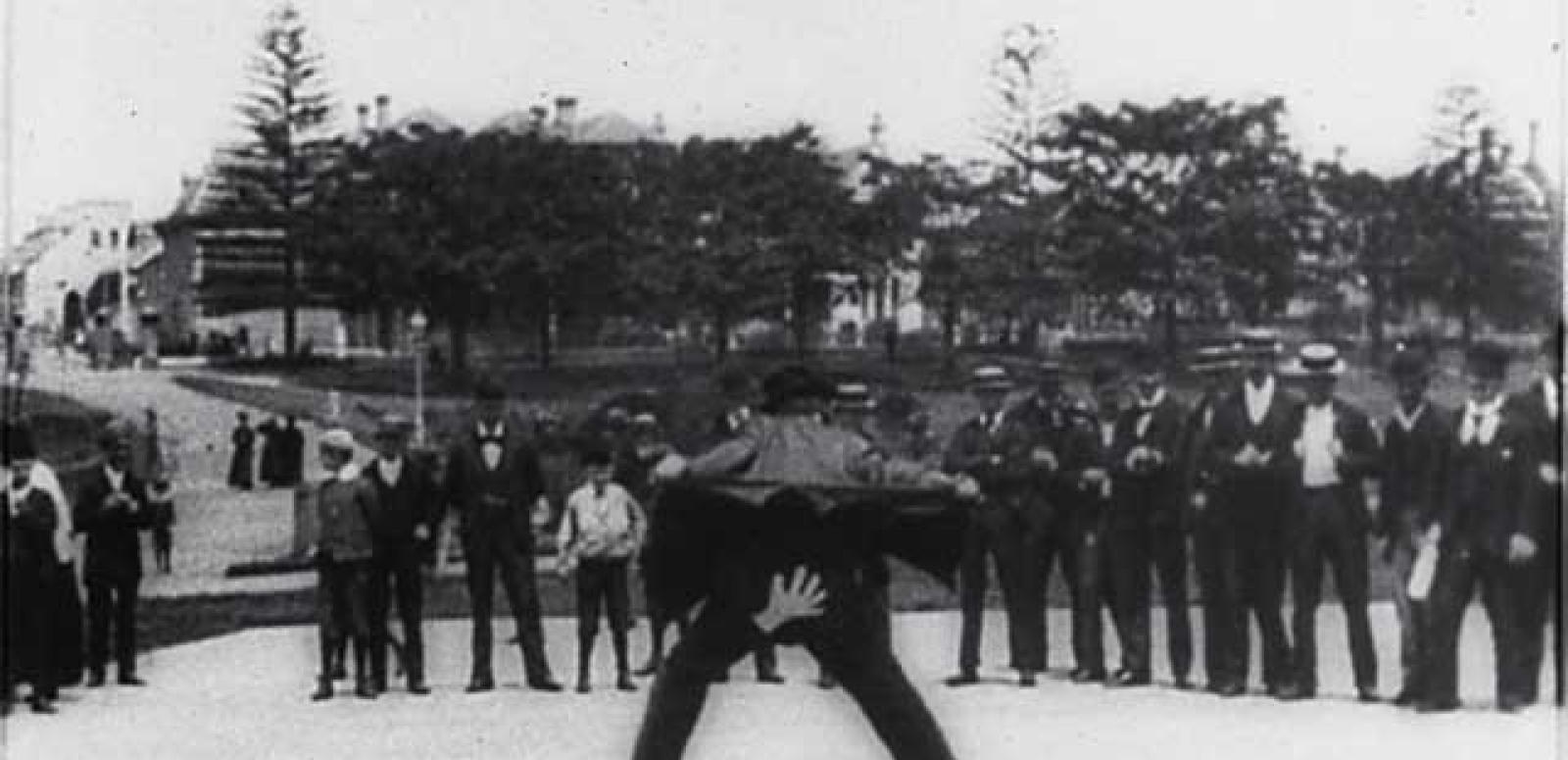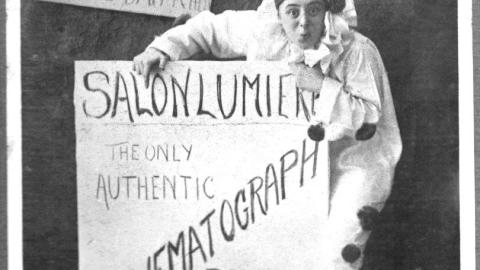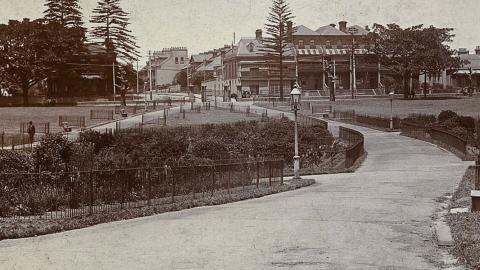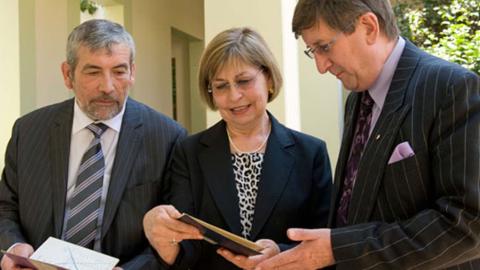

Marius Sestier
Patineur Grotesque
Patineur Grotesque was made in Prince Alfred Park, Sydney, New South Wales, in 1896. And though it was not screened in Australia until 17 March 2010, it is thought to be Australia’s earliest surviving film.
When frères Lumière representative to Australia, Marius Sestier, arrived in Sydney in mid September 1896 one of his tasks was to not only show films but to make films. With his Australian concessionaire, Henry Walter Barnett, the pair made Australia’s first film Passengers Leaving SS Brighton at Manly in Sydney. The first screening of that film at the Salon Lumière on 27 October 1896 was a success and Sestier announced more local films to come. Sestier added to his Australian-produced films with 15 films of the Melbourne Cup Carnival.
Patineur Grotesque, aka The Humourous Rollerskater or The Burlesque Roller Skater, was made in Prince Alfred Park, Sydney but the exact date is still unknown. Despite this, the film’s first screening was not in Australia, but in Lyon, France on 28 February 1897. It is believed that the film had never been screened in Australia until 2010.
Patineur Grotesque was found and restored by the Magyar Nemzeti Filmarchivum (the Hungarian National Film Archive) in 1966 but not identified as an Australian-produced film. It was during the production of the 1996 Bibliothèque du film (BIFI) publication La Production cinématographe des Frères Lumière that the film was listed as part of Sestier’s work in Australia.
In 2005, Coralie Martin, an intern of the NFSA’s Research Program identified two films made in Australia by Marius Sestier in 1896 which were not in the NFSA’s Collection. She identified the two films after assessing the NFSA’s holdings of frères Lumière films against the holdings of the Centre National de la Cinematographie (CNC) in France. The NFSA then undertook negotiations with the CNC for copies of the films and they arrived in May 2006.
One film was from the Melbourne Cup Carnival Series shot in Melbourne in 1896 and was added to the titles already held. The Melbourne Cup film was readily identified as the weighing-in for the Cup, in which the jockeys ride their horses to the weighing room on the Flemington racecourse and are weighed for correct weight before the race.
The other film was of a burlesque (comic) roller skater also made in 1896. The second film of a roller skater, Patineur Grotesque, was unknown to NFSA curators as there had been no previous mention of this film in Australia.
The film is one minute long and the action takes place in the centre of the frame. A man in costume on rollerskates performs for a gathering crowd. As part of the act the skater trips and falls, then drops his hat. As he attempts to retrieve the hat he continues to fall about revealing a white hand motif on the seat of his pants as he bend over and flips his coat tails. When, finally, the hat is restored to his head, the act is completed.
Burlesque rollerskating had been included on the stage since the 1880s in Australia and around the world. A burlesque rollerskater was often hired to perform at outside venues such as skating rinks, circuses, aquariums or other places of amusement.
Now also recognised as Australia’s first comedy film, it is interesting to note that French film historian, Georges Sadoul, in his 1973 rewrite of L’invention du Cinéma, refers to Patineur Grotesque as the forerunner to the work of Charlie Chaplin and Max Linder.
Under the direction of Marius Sestier
Within a week of Marius Sestier’s Salon Lumière opening in Sydney on 28 October 1896, it was flourishing beyond expectations. And though not the first presentation of moving pictures in Sydney or Australia, it was Australia’s first cinema. Sestier presented the Lumière Cinématographe to Sydney and the quality of image, content and presentation was extraordinary.
The Salon Lumière was open from midday through to late evening with screenings every 30 minutes. Once seated in the electrically-lit room, the light would be turned off at precisely the half hour and the first image would be thrown onto the screen.
This allowed patrons to drop in at any time to view the current program, and long queues often extended down and across Pitt Street. Unlike the competitors, whose limited evening screenings were part of a program dedicated to live performance, Salon Lumière only screened films.
Sestier was one of the 23 frères Lumière operator/representatives to travel the world. While many of the representatives travelled to other European countries, Sestier was one of a small handful who travelled beyond Europe. Marius Sestier, with his wife Marie-Louise Sestier, travelled first to India and then on to Australia. Sestier also made 19 films in Australia.
© Association frères Lumière email address
Film curator Sally Jackson began a project to research Patineur Grotesque, and in the process gathered much new information about Marius Sestier’s time in Australia, in India and his life in France.
For more on Marius Sestier see Salon Lumière: Australia’s first cinema.
View further notes about Patineur Grotesque on australianscreen.
The National Film and Sound Archive of Australia acknowledges Australia’s Aboriginal and Torres Strait Islander peoples as the Traditional Custodians of the land on which we work and live and gives respect to their Elders both past and present.


